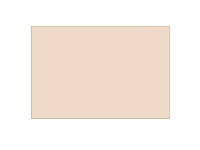|
Outline
This method is used to repair damaged and lifted lands. The lifted lands are repaired with dry film epoxy. They are re-bonded to the circuit board surface using a bonding press or bonding iron.
|
|||||||||||||||||||||||||||||||||||
|
Procedure
Procedure
Evaluation
|
|||||||||||||||||||||||||||||||||||
Images and Figures
Lifted Land Repair, Film Adhesive Method

Figure 1. Cut out the appropriate shape of Bonding Film material to match the area of the lifted land.

Figure 2. Place Kapton tape over the lifted land.
|
|||||||||||||||||||||||||||||||||||
4.4.2 Lifted Land Repair, Film Adhesive Method
Procedure covers method to repair lifted lands on circuit board assemblies using dry film adhesive.
Minimum Skill Level: Advanced
Conformance Level: Medium
REQUEST FOR QUOTE GUIDES INDEX

Lifted Land Repair, Film Adhesive Method

Cut out the appropriate shape of Bonding Film material to match the area of the lifted land.

Place Kapton tape over the lifted land.

Circuit Frames have a dry-film adhesive backing to ensure the delicate repair procedure is easy, fast, and highly reliable
LEARN MORE

You'll appreciate the accuracy of this precision machine when repairing conductors, lands, and surface mount pads.
LEARN MORE

We're here to help with all your challenging circuit board and electronic component rework and repair needs.
LEARN MORE
SLIDESHOW STARTING
❮
❯



















